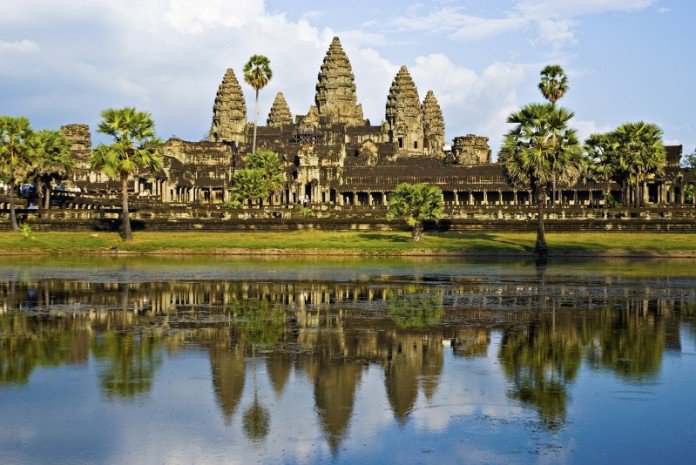
page
of
1
Originally posted by: DilMereSuntaNhiIs it really there in Cambodia ?
I wonder how old it is ...
DO share some more info pls ..

Lost in the woods for over 400 years, the discovery of Angkor Wat, the largest Hindu monument literally shocked the world. Angkor Wat, Cambodia's famous temple is a place full of still unexplored history, myth and legend.
It denotes Cambodia's unwrapped mystery of civilisation that for centuries looked like it never existed. The hidden temple was a stuff of legend until 1860 when a French naturalist, Henri Mohout accidently came to that place during his expedition. He saw the ruins of Angkor Wat. But why did the civilization collapse? How did they make this sophisticated temple with no modern technologies? What must have happened? It's the high time to uncover these hidden secrets.
Angkor, the capital of last Cambodian empire was home to millions of people over 800 years ago. The powerful empire covered South East Asia including Vietnam, Bay of Bengal and North West China.
Built in the 12th century, Angkor Wat is among the wonders of the world. Even today, this world's largest religious monument has a huge complex stretched at about 200 hectares of land. While entering the main temple a vast gate gives an impression that you have reached the temple, however, you realize that the main temple still is 400 yards away. The expansive nature of temple is seen to be believed.
Also known as the city temple as it was surrounded by urban areas (long back before disappearing). When built, it was dedicated to representing Hindu god, "Lord Vishnu". There is a 213 feet high central tower(temple) encircled by 4 small towers representing Mount Meru, a celestial home of god based on Hindu mythology. It took 50,000 workers to build this extraordinary temple, that was completed in the year 1145. This huge temple can be compared to Egyptian pyramids in
This huge temple can be compared to Egyptian pyramids in the context of the strength. Compared to the construction of modern European temples which require almost 300 to 400 years, Angkor Wat was completed in only 32 years. How did they do? The answer to this question lies inside the temple. There is a carving in the main temple which gives clues to the mystery of building this huge temple without any modern technology. The story carved in the stones speaks: a lever used to push big stone blocks one over another to assemble it perfectly. This shows Angkor Wat was planned, assembled and then carved.
The surface of this masterpiece is covered with carvings that display the Hindu mythological stories originated in India. But how did the stories from India arrive in Cambodia? The answer is "Indian Traders". The Indian traders travelling towards south-east Asia passed their religion, art and architecture to the local people of Cambodia. This way the traders were an important part of spreading Hindu culture in Cambodian Empire.
Archaeologists have used sophisticated aerial imaging techniques to look into the past of Cambodia. In 1994, NASA took the first image which shows Angkor Wat was huge and another recent satellite image show collection of hundreds of temples in the area. The modern technology has also thrown light on the extensive water management system of the Cambodian empire which existed those times. This shows the engineering marvels of Cambodians. They constructed rectangular reservoirs and water systems in such a way that the water from Kulen Mountain irrigates the farms resulting in a good harvest. It could have been the work of only advanced and skilled people.
How did the civilization collapse? Hard evidence points towards the failure of Water management system. But the debate is still going on. Surprisingly the temple was never abandoned, a group of Buddhist monks stayed there and aggressively worked to save the religious place for over centuries. This also gradually resulted in the transformation of a Hindu Temple into a Buddhist temple.
In 1992, Angkor Wat was listed as World Heritage site in danger. Subsequently, it was removed from the endangered list, to be included as a World Heritage site. France, Japan and China have helped in temple restoration project. India's archaeological department had also chipped in the 1980s. Currently, German Apsara Conservation project is in place to save the sculptures carved on the stones. Due to the continuous efforts of UNESCO and other nations Angkor Wat has become a major tourist spot with over 2 million people visiting this place every year.(Inputs from Aakash Sinha)(image-Unesco)
comment:
p_commentcount